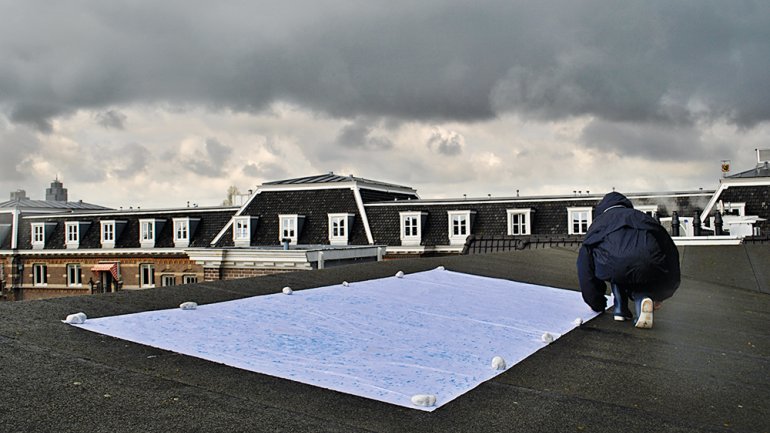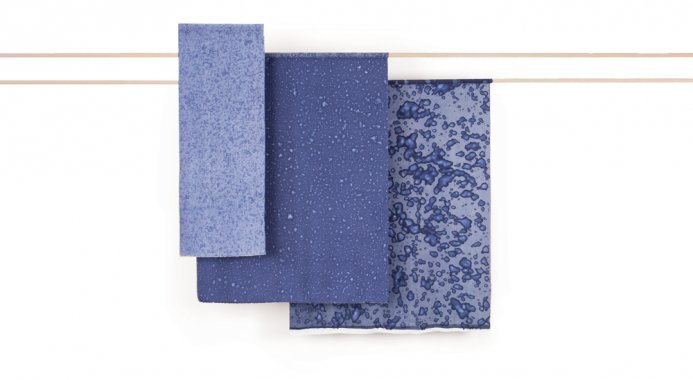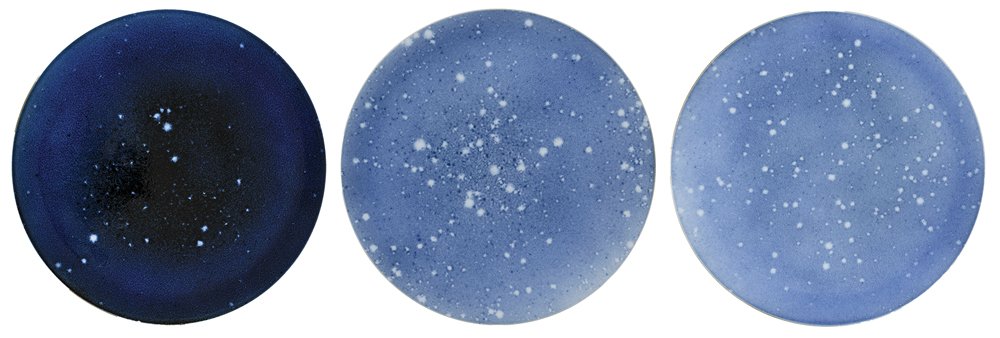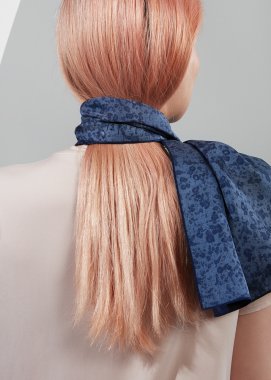Made By Rain
Made By Rain
Most people run from the rain, but Aliki van der Kruijs heads straight into it. During drizzles and downpours, the Dutch textile designer has been known to hastily end phone calls or excuse herself from social events to get outside and capture precipitation on her wares.
Van der Kruijs, who is based in The Hague, Netherlands, devised a way for people to “wear the weather.” She calls it “pluviagraphy.” Fabric is coated with a water-sensitive film that records the raindrops as they fall, resulting in leopard-like patterns.
For her Made by Rain line, Van der Kruijs, 35, makes silk scarves, each marked with the weather conditions, date, time, and location it was made. She recently tweaked the technique to work with porcelain, during a residency in Arita, Japan. In collaboration with ceramist Akira Fujimoto, she now offers plates that bear similarly mottled patterns.
The idea to take advantage of the prevalent rain in the Netherlands, with a climate similar to our Pacific Northwest, came to Van der Kruijs in 2011, when she received a stack of her grandfather’s calendars after he died. On each day, he’d recorded the weather.
“My grandfather was not a very poetic man or into keeping things, but I found the calendars very personal and touching,” says Van der Kruijs. “Along with the scientific data, he’d make little notes like, ‘It was a good day on the birthday of the queen,’ or ‘It’s so cold you get cracks in your hands.’ I thought, what if I do the same, but visually?”
At the time, Van der Kruijs was a graduate student, experimenting with a weather-inspired clothing collection. For an installation commissioned by the open-air Zuiderzee Museum, she painted white clothing with blue pigment, hanging the pieces on a clothesline for nearly half a year to observe how their colors and patterns changed from exposure to the weather. Just as her grandfather had, she documented the climate changes daily. “When I got his calendars, I was amazed that I was in the middle of doing the same thing,” she says.
Although Van der Kruijs expects to keep the line going, she said she didn’t set out to make scarves, plates, or any product. “Mostly I’m very curious about the process,” she said. “It’s more about the research and investigation.” To that end, she recently developed a design for an upholstery collection, based on an antique kimono, for design company Wolf-Gordon, and she’s been collaborating on a water-themed weaving project.
“I don’t see myself as an activist, but I do try to contribute to environmental awareness,” she says. “Whatever I’m working on, I always try to connect something made in the studio with something outside.”
Drop by Drop
Early soaking: Van der Kruijs’ first childhood memories are of the monsoon rain in Nigeria, where she lived until she was 4; her father, a soil scientist, was doing research there. “We would run from the carport and get totally soaked. It was very loud.”
Dry spell: She has a backlog of scarves, which came in handy in 2018, when the Netherlands faced a severe drought. “The year before, I made 30. Last year, it was so dry that I hardly made any textiles.”
Up on the roof: For years, Van der Kruijs treated fabric on her apartment building’s rooftop, but new rules prohibit residents from going there. “Now I use a big parking lot behind my studio. It works fine, but it’s not so romantic.”







